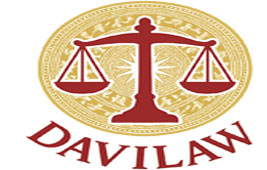What is empty land? Can saved land be issued a red book?
1. What is empty land?
Currently, there are no regulations regulating open land, however, it can be understood that open land is construction safety corridors, traffic safety corridors, land for construction of transportation systems, irrigation, etc. dykes, water supply systems, drainage systems, waste treatment systems, electrical conduction systems, etc. This is the land area with land preparation planning to serve public works, transportation, and irrigation. Benefits, electricity,... that the State has not used yet.
2. Can I get a red book for unsaved land?
As analyzed above, retained land cannot be understood as land within the construction safety corridor, therefore, according to Point c, Clause 4, Article 56 of Decree 43/2014/ND-CP, it is stipulated as follows:
Land within the construction safety corridor is granted a Certificate of land use rights, ownership of houses and other assets attached to land in cases where the conditions for being granted a Certificate of land use rights and ownership of land are met. own houses and other assets attached to land according to the provisions of the Land Law, except in cases where there has been a land recovery notice or land recovery decision.
People who are granted a Certificate of land use rights, ownership of houses and other assets attached to land may only use land according to the provisions of Point b 4, Article 56 of Decree 43/2014/ND-CP.
Thus, unsaved land can still be granted a red book if all conditions are met as prescribed by land law and the time of land use and management is before the construction planning and construction of works.
3. Regulations on the use of open land
According to Article 157 of the Land Law 2013, regulations on the use of unoccupied land are as follows:
- Land for construction of public works with safety protection corridors includes land for construction of transportation systems, irrigation systems, dykes, water supply systems, drainage systems, waste treatment systems, and waste treatment systems. Electricity, petroleum, gas, communications and land conduction systems belong to the safety protection corridors of these works.
- The use of land for construction of public works with safety protection corridors must ensure the combination of exploitation of both the aerial and underground parts, and arrange a combination of types of works on the same land area to save money. land and must comply with relevant specialized laws on construction safety protection.
- People who are using land recognized by law and that land is within the safety protection corridor of a construction project may continue to use the land according to the determined purpose and must not obstruct the safety protection. whole project.
In case the use of land affects the safety of the project, the project owner and land user must take remedial measures. If unable to remediate, the State will recover the land and compensate according to regulations. under the law.
- Agencies and organizations directly managing projects with safety protection corridors are responsible for publicly announcing the construction safety protection corridor boundary markers and are primarily responsible for protecting the safety of the project; In case the safety protection corridor of a project is encroached, occupied or used illegally, it must be promptly reported and requested to the Commune People's Committee where the safety protection corridor is encroached, occupied or used illegally. permission to process.
- People's Committees at all levels where projects with safety protection corridors are located are responsible for coordinating with agencies and organizations directly managing the project to propagate and disseminate laws on project safety protection; publicly announce land use boundary markers within the construction safety protection corridor; promptly handle cases of encroachment, occupation, or illegal use of construction safety corridors.









